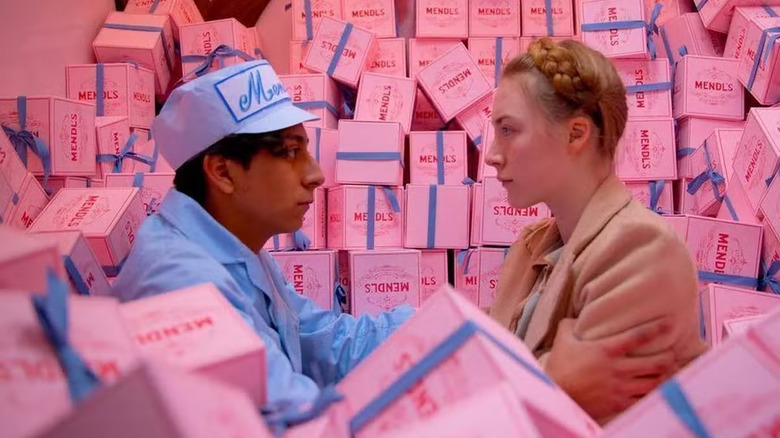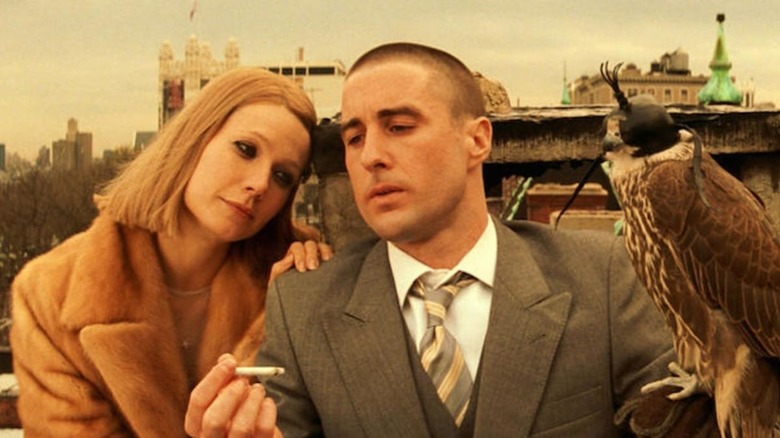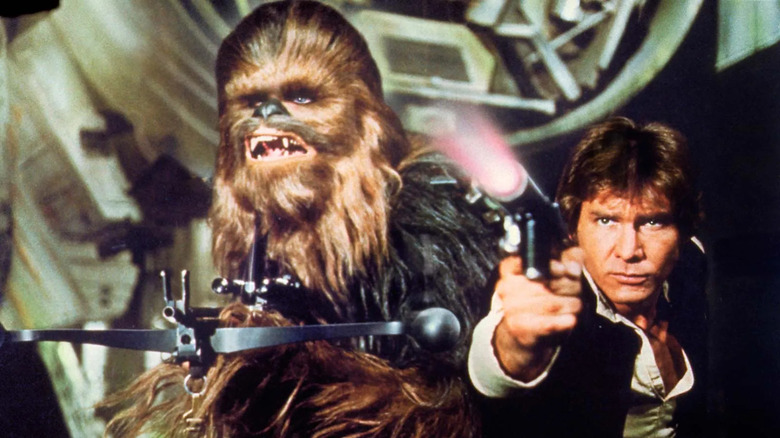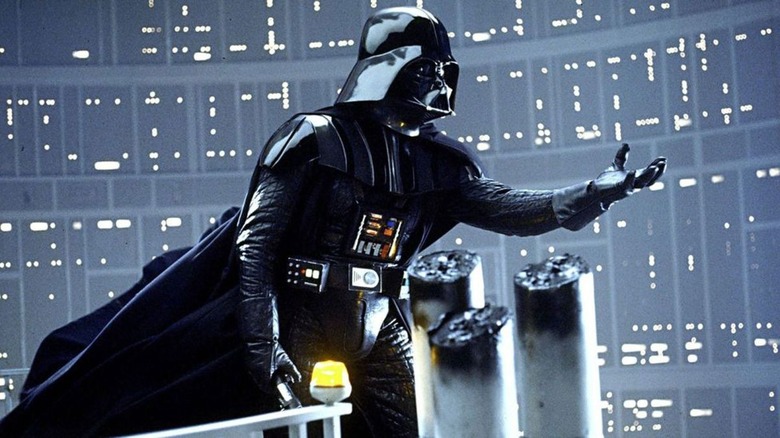That A.I.-Generated Wes Anderson Star Wars Trailer May Have Gone Viral, But It Flat-Out Sucks
You saw it, right? I know you did. It was all over Twitter, spreading like a sick, sad wildfire through every new blue check account — and those without Twitter Blue who felt the need to give their opinion too. It's hard not to have something to say about that AI-generated Wes Anderson-style "Star Wars" trailer, but here's the only real thing to say about it: It totally sucks, and I'll tell you why.
Look, I'll give the video an ounce of credit. Yeah, it's able to replicate the basic visual aesthetic of a Wes Anderson film. It includes the things most consider important to distinguish his films from that of other auteurs: bold pastel coloring, the composition and framing of the shots, and even the pointed stares of the actors in frame. Each element is crucial in building a recognizable Wes Anderson movie — but they certainly aren't the only elements needed to bring the filmmaker's visions to life. In fact, to claim that aesthetics are all a film needs is disingenuous, small-minded thinking ... which, if I'm being honest, seems to be at the heart of nearly all Hollywood-meets-AI discussions.
The foundations that keep beauty alive
Here's what I love about Wes Anderson films. They're sharp, they're witty. They're emotionally resonant and touching, always coming from a place of true heart and tenderness. They're highly stylized, yes, but uniquely human all the same. There are so many memorable moments throughout his filmography that illustrates those points, like the poignant ending scene between Ben Stiller and Gene Hackman in "The Royal Tenenbaums" or the moment where the three brothers attend an Indian funeral while simultaneously reliving their father's funeral in "The Darjeeling Limited." That's the thing about his movies, they may be lovely to look at, but the emotional core of his work is the foundation that keeps that beauty alive.
Which, of course, brings me to my next point: the fact that AI and emotionality don't exactly mix. The "Star Wars" video hits some key visual marks, but it has approximately zero soul. Even the way the computer-generated characters stare out into the eyes of the viewer is unsettling, practically uncanny valley levels of an unending void. These AI projects simply cannot replicate the soul and humanity of the films, or any films for that matter. It simply isn't equipped for that, because the kinds of folks who create, engage with, and champion AI programming becoming intertwined with art tend to be those who don't have what it takes to succeed in creative pursuits. It's a vehicle for entrapment, a poisoned apple waiting for Snow White.
Capturing the breadth of performance
Plus, AI is nowhere near capable enough to capture the breadth of the performances Anderson is able to pull, craft, and mold from his multitudes of seasoned, skilled actors. In one of his films, the emotionality runs the gamut from elation to despair to wild abandon, and these actors are able to do all of this while also adhering to stylistic directorial choices in their speech and physicality. And to be fair, the same thing applies to "Star Wars" films—the emotional life there is that of any strong hero's journey and stays with the audience throughout the picture.
But with an Anderson project, the actors aren't just crafting the characters themselves, they do so in true collaboration with the filmmaker in an effort to maintain an overarching aesthetic throughout his works. AI doesn't have the wherewithal to even give a little emotional output, let alone the amount required to both find your character's motivations and take on a sort of mold your character must also fit into. It's supposed to be very intelligent, but intelligence alone can't tap into what makes us human. At the end of the day, no matter if a film was made by Anderson or George Lucas, it was created, nurtured, and birthed from a human perspective, and that is crucial in creating art.
There's a reason its intelligence is artificial
With the Writers Guild of America being forced to begin their strike on May 2, AI poses a real threat to the security and safety of writers in Hollywood, but this extends to many facets of the industry, including directors, actors, editors, and effects specialists. The "Star Wars" trailer makes that much viciously clear. But what it doesn't account for is its inability to understand the pure core of art itself. Aesthetics can rarely be sustained without a thesis statement behind them. And let's be honest here, AI isn't exactly killing it on the visuals yet either. In many viral "Hollywood is over" Twitter threads containing AI-generated creations, the fingers are still warped, usually lacking at least one. The faces are still inhuman and creepy if you stare too long, distorted and misshaped excuses for humans expressing laughter, sorrow, even contentment. Even the straight, expressionless faces of the "Star Wars" trailer feel wrong when you look at them for more than a beat.
There are so many things AI-generated projects get wrong, and sure, you can manipulate a program to emulate a programmable aesthetic. Anderson's is surely formulaic enough to be programmable—but being able to essentially morph into a wolf in sheep's clothing doesn't hide the fact that AI-generated filmmaking has no heart, no emotional core, no soul. This is the consistent fact permeating every attempt thus far to make "cinematic" AI content, not just the "Star Wars" trailer, and it will continue for as long as we try to force AI to figure out how to be like us. The simple fact is that it can't, it is what it says it is: artificial. And films made by human beings don't feel artificial, they feel whole and true and alive.



